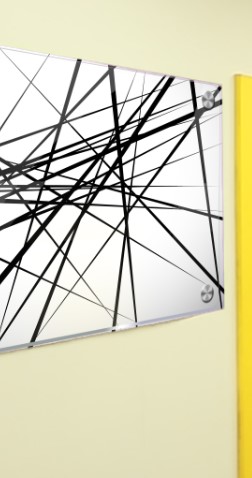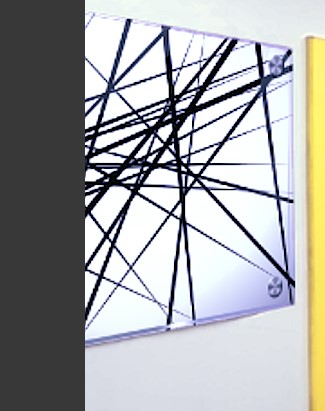- Home
- After Effects
- Discussions
- Re: Dynamic link graphic and render display not co...
- Re: Dynamic link graphic and render display not co...
Copy link to clipboard
Copied
Hi guys.
Have this clip with a green scree, I set a dynamic link and replaced it with that image, in after effects looks good here below

and in premiere pro doesn't, and the render too...
here below.

I tried many other images, but still you can see the resolution is bad.
Don't know how to fix this.
 1 Correct answer
1 Correct answer
Thanks for the "lesson".
And advertising a third part software.
But I found the solution, I had an effect that had to be turned off at some point in the timeline.
So what you said is not correct at all, the render is in premiere linked to AE is just fine.
NO NEED FOR EXTERNAL THIRD PART RENDER SOFTWARE.
Thank you.
Copy link to clipboard
Copied
It's hard to say without knowing the exact workflow. The first thing I would do would be to just render a lossless DI (digital intermediate) using AE and replace the shot. That usually takes a lot less time than dealing with Dynamic Link issues. If I use Dynamic Link for complex effects I always render and replace anyway. AE renders Dynamic Link comps in the background using a fairly crippled rendering engine. That is why it takes so much longer in Premiere Pro to render the shot than it does when you use AE's Render Cue or, even better, Render Garden. That's why my rule is if it takes longer than a second or two a frame to render in AE, render and replace.
Copy link to clipboard
Copied
Hi thank you.
I have my clip in premiere with a green screen.
I create a dynamic link in AE, do my changes there, replacing the green screen.
Go back to Premiere and the images are the result, loss of quality.
So you're saying that I should render in AE and then replace the whole dynamic linked clip ?
What do you mean by : lossless DI (digital intermediate) ?
Copy link to clipboard
Copied
If you don't understand what a digital intermediate is or what lossless formats are then you need to do some studying.
The default output module setting is lossless. The renders an intraframe compressed (every frame is real) visually lossless video so all the pixel data is preserved and every frame exists as a separate image. If you render something like an h.264 movie you get an interframe compressed format where at least 2/3 of the frames in your video are made up almost entirely of predictive calculations and the pixel data for those frames is just a guess. Most compressed formats that folks use for distribution and sharing are not visually lossless. Until you can make an educated choice just stick with the Lossless preset, render your DI and replace the clip in Premiere Pro.
To tell you the truth my standard Dynamic Link workflow is to select one clip in a Premiere Pro sequence, select Create comp from selected, Save the AEP (I usually already have one open where I store most of the work for that scene), make sure the comp is open, return to Premiere Pro and press Ctrl/Cmnd + z to undo that action, return to AE and do my composite, send the composite to the Render Cue and use RenderGarden to start the render, go back to Premiere Pro and find another shot, not a sequence but a shot, that needs to be processed in After Effects and start over. I should also note that I usually extend the comp created by dynamic link a few frames to give me handles, extra frames to fine-tune the edit later - usually 30 or 60 of them, and then when Render Garden is complete I send off the MP4 that Render Garden creates to the client for approval if necessary, and add the rendered shot to a new bin in Premiere Pro so I can drop it above the original clip in Premiere Pro and continue with my work. I never wait for renders, I always fine tune the editing of sequences in Premiere Pro, maybe one out of 100 AE comps contains more than one shot and is longer than seven seconds, and I'm always done ahead of schedule. Everyone I know that uses dynamic link to do complex composites and effects is always hard pressed to make a deadline and wrings their hands waiting for Premiere Pro to render the final.
I do use Dynamic Link all the time for simple effects that render very quickly for simple projects. It is a great time saver, and it saves me a bunch of time in setting up a shot for visual effects when used the way I described. If your shots have timecode and you are set up to use timecode in the timeline of AE and in Premiere Pro there is no problem at all keeping things in sync. If you have no timecode because you are using consumer equipment you have to be a lot more careful with record keeping, but it still can be managed.
I hope this helps.
It does not solve the low-quality rendering problem, but that is probably caused by a setting in AE or the Media Encoder. If all you are doing is creating a key then it is probably not a GPU accelerated effect that is causing problems. If you are using the C4D or Ray-Traced rendering engine in AE you really cannot use Dynamic Link. Make sure all of the render options are set to full quality and the rendering problem should go away, but it won't save you any time. Let us know what you end up doing and give us complete workflow details and screenshots of all your settings if you can't figure out where the render settings are fouled up.
Copy link to clipboard
Copied
Thanks for the "lesson".
And advertising a third part software.
But I found the solution, I had an effect that had to be turned off at some point in the timeline.
So what you said is not correct at all, the render is in premiere linked to AE is just fine.
NO NEED FOR EXTERNAL THIRD PART RENDER SOFTWARE.
Thank you.
Copy link to clipboard
Copied
I actually said that simple renders in Premiere Pro are fine. Anything complex is a crapshoot. I also said that something was fouled up in your settings somewhere, which it was.
Copy link to clipboard
Copied
This is what you said:
"AE renders Dynamic Link comps in the background using a fairly crippled rendering engine"
Copy link to clipboard
Copied
It is crippled. NO GPU acceleration Seriously hampered Ray-traced and C4D rendering. It is the same render engine that is used for the Adobe Media Encoder and when you throw an AE project on top of the Premiere Pro renderer the resources are cut by more than half. This means that a complex render using GPU accelerated effects that takes 10 seconds a frame to render in the AE Render Cue could easily take 20 seconds a frame to render with the Adobe Media Encoder and 40 seconds a frame if you were rendering the same project dynamically linked AE comp through Premiere Pro. Those are pretty optimistic numbers. You won't see much of a difference if you are only pulling a key, but if you are doing a complex composite the difference can make or break a deadline.
I do this for a living. Have for years. And I know where my money comes from. It's not waiting for renders. Nobody pays for renders anymore. If they do, it's going to be at a rate that a one-man shop can't afford to take.
On a side note, and yes it's another product pitch because this product paid for itself the very first time I used it, A render that takes 10 seconds a frame in the Render Cue would easily render at 2.5 seconds a frame using Render Garden, even with a modest system. I routinely create composites that take up to a minute a frame to render. I redesign if it's going to take more than 7 minutes a frame. That's why I recommend products like Render Garden. It only takes about 30 seconds to set up the render, get it started, and then jump back into AE or Premiere Pro and rack up billable hours. I don't get paid for product endorsements, but I do suggest ways that anyone using any of the tools I use to do their job can save a buck and have a better chance at making a living.
Copy link to clipboard
Copied
Find more inspiration, events, and resources on the new Adobe Community
Explore Now